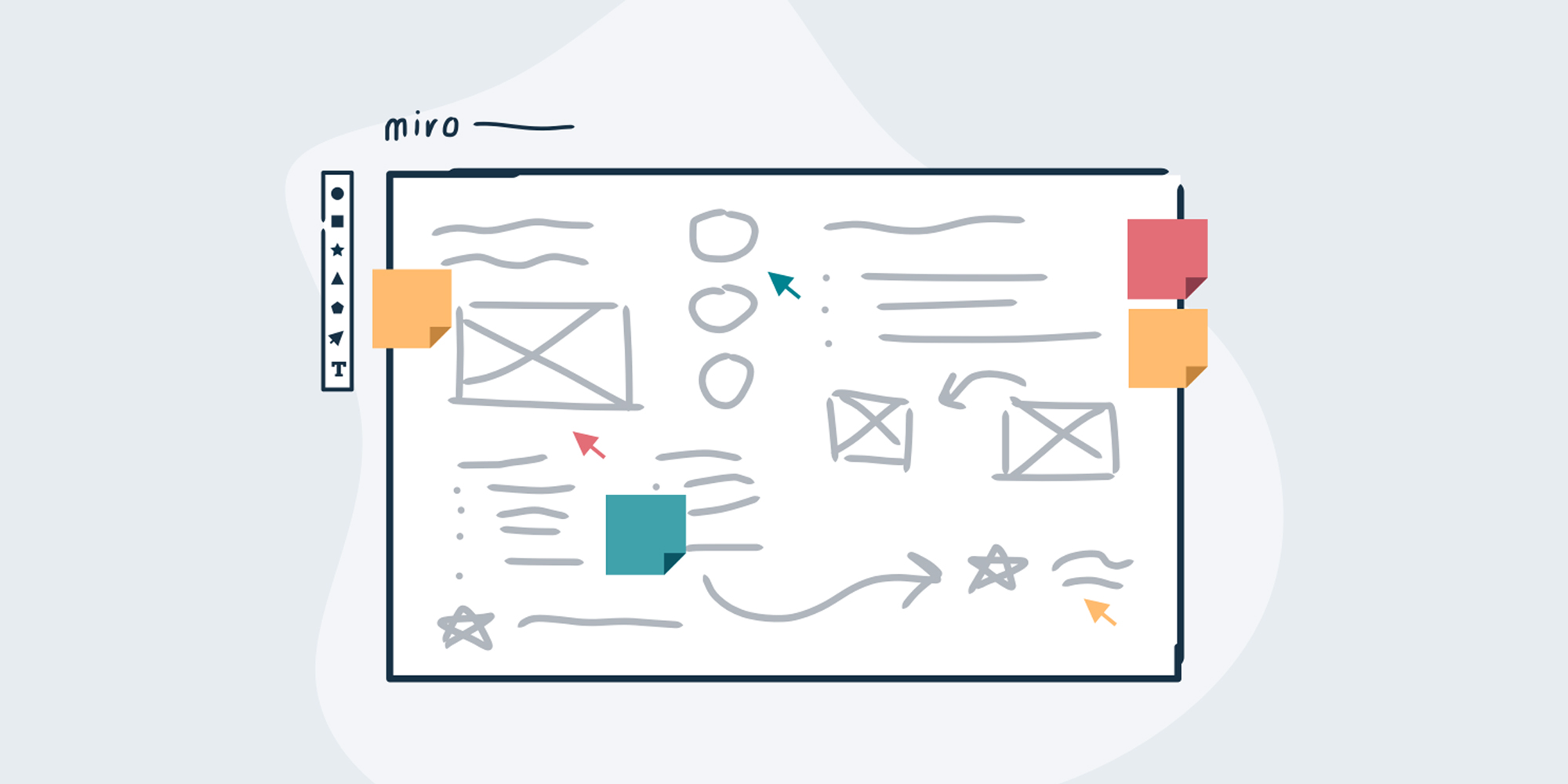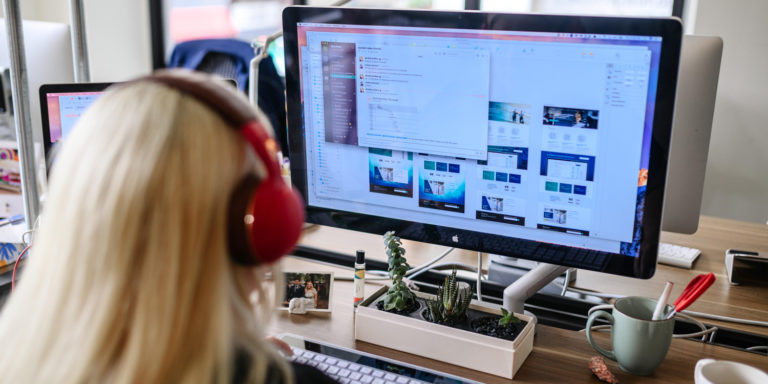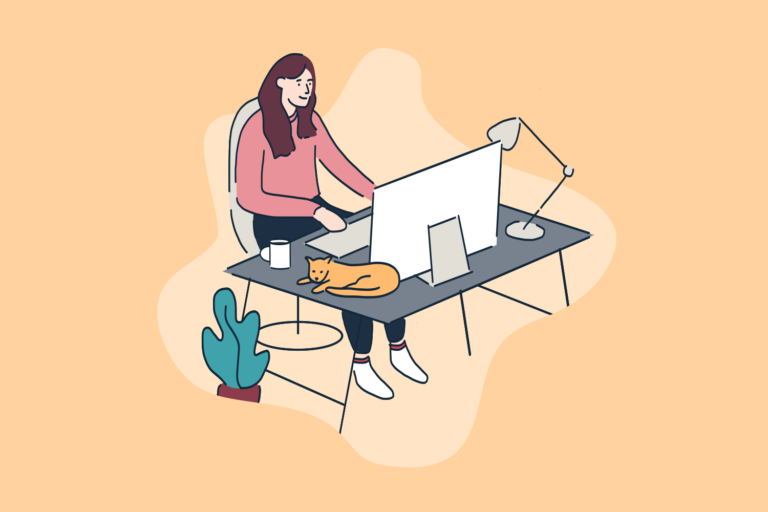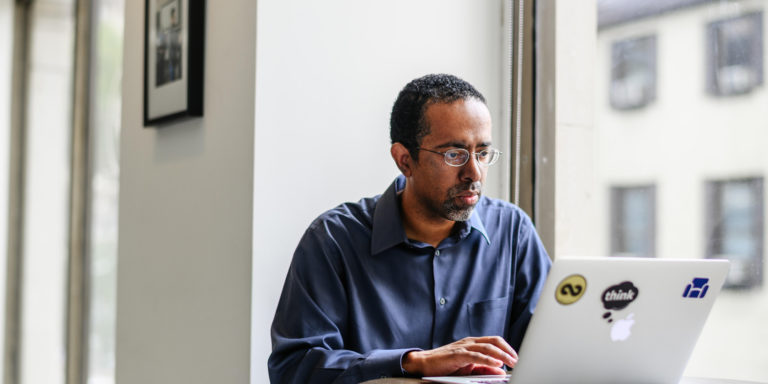
Before we started working fully remote this year, we often turned to the whiteboards in our studios for design collaboration. Huddled around these blank canvases, we’d quickly scribble out user journeys, wireframe connections, and lots of design-centered ideation. If we needed to preserve sketches beyond our session, we’d write in screaming caps, “DO NOT ERASE,” to deter our fellow Thinkers from wiping the evidence of our thoughts away.
In the past, we’ve also loved inviting clients into our space, handing them a marker, and asking them to ideate alongside our team.
Now knee deep in our remote working environment, we’re all physically separated by our person (and maybe even by time), and we’re seeking out techniques to collaborate and work together creatively while we’re away from our favorite physical tool.
One of our main sidekicks during this time is Miro—a highly-collaborative, virtual whiteboarding tool that’s great for collecting information and drafting quick ideas, much like the whiteboards in our studios. While we’re leaning into working on different timelines with our team members and clients, we’re noticing that our work is still unfolding in a “natural” way thanks to this tool.
Here are a few ways your team can adapt virtual whiteboards for productive and effective design collaboration.
Use Miro as a Whiteboard Alternative and More
Miro’s forcefully non-precious canvases allow us to feel as messy as a whiteboard—as organized in chaos as a fury of post it notes, and as collaborative with our clients as ever before. Yes, it takes time to adjust to using a virtual whiteboard, and no tool can really replace the physical energy one gets from sketching at the whiteboard together. That said, Miro has served as a great repository for ideas, sketches, and information we don’t want to forget—a centralized space for seemingly disparate pieces of information. We can keep these boards in their original state for reference and continued work later, and they’re never at risk of being erased.
At the next level, we’ve also been using virtual whiteboards in ways we didn’t expect: to collect artifacts, create landscapes of wireframe designs, build effort vs. impact matrices, and implement the sailboat exercise, among other things. Well aware of the uncertainty present in digital projects—especially right now—one of our project managers used Miro to create project roadmaps and workflows to visualize recent changes in how teams need to work together in this dispersed environment. These are all activities that we usually wouldn’t rely on a whiteboard to do, but we’re suddenly finding Miro to be very handy for any kind of visually-focused planning at a distance.
Make Progress with Asynchronous Teamwork When Meetings Can’t Happen
We’re all trying to be conscious of screen fatigue, conflicting schedules, and the varying needs of people working remotely. If (and when) meetings don’t align, we use Miro to ensure we can effectively continue to work through ideas.
Working at different times on the same thing not only helps bring new ideas to the table, but it helps conversations progress when we do take time to meet. When we’re apart, we have the individual flexibility to think through and manipulate sketches on our own. When we come back together, we’ve already documented our thoughts and feedback, and we can talk through the next-phase approach.
Right now, there is a huge benefit in having different eyes on the work at a consistent pace, then being able to return to a shared, collective space when we’re able.
Build Relationships Through Shared Vulnerability
At first, it felt daunting to share our virtual whiteboards with clients—mostly because we felt a slight sense of vulnerability. Were these seemingly messy and vast boards going to make sense to people, especially as a remote working tool? With little time to spare, we’ve embraced the perspective that honesty is the best form of communication, trusting that our clients would be willing to get messy and come on this journey with us, even if it would be bumpy to start.
To our collective delight, our client teams have adapted right alongside us. We’ve found ourselves building stronger relationships during remote kick-off sessions, project touchpoints, and workshops—using Miro as our mechanism to visually share and talk through issues or ideas in real time.
Our strongest observation is that remote meetings feel more organic while using virtual whiteboards as opposed to walking through a “traditional” prepared slide deck. Now, design reviews feel more like brainstorming sessions with everyone actively engaged and contributing (rather than one side presenting and one side reacting). While this arrangement does come with some added preparation, our teams are building to a noticeably higher level of trust and excitement at the important collaborative points of a project.
A Few Tips for Making the Most of Virtual Whiteboards
For some of us, Miro was our tool of choice prior to working on a fully-remote basis, while others are just diving in now. Here are a few tips and tricks to level up your skills or help get you started using virtual whiteboards remotely:
- If clients or team members are new to Miro, offer a few minutes at the beginning of meetings for a quick tutorial. Ensuring everyone feels comfortable in the platform will save you time and build everyone’s confidence. We also craft our talking points internally before any meeting so we are clear on what we’ll share, when, and how.
- Provide a jumping off point and have pre-populated “stickies” or a framework already set-up prior to meetings. This goes a long way in helping others to feel comfortable contributing ideas.
- Do the cleanup after the session, and if you’re stuck trying to capture something during your meeting, just get it down. You can come back after the meeting has ended to dot the i’s and cross the t’s.
- Have only one or two team members working on the board at a time to ensure things don’t get confusing. This allows participants to focus on keeping an open dialogue.
- Share the board link with everyone after the meeting, and invite thoughts and feedback by enabling comments.
As our work environment becomes increasingly more remote, we’ve enjoyed building a collective knowledge on how tools can not only work for us, but provide benefits we didn’t see before. We hope these recommendations and tips will help you move into this virtual landscape with open arms.
We’d like to thank our fellow Thinkers and Miro enthusiasts, Dan Singer, Allison Drechsler, and Sunkwon Bush, for their contributions to the development this post.


